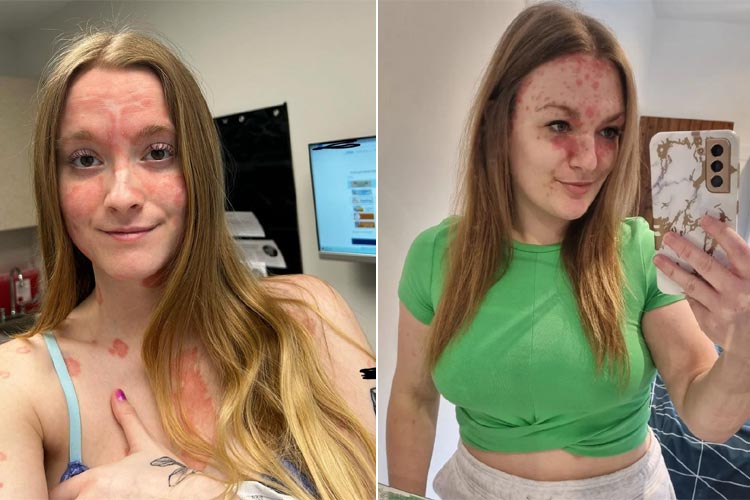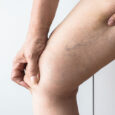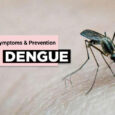Guttate psoriasis is a type of psoriasis that often occurs in childhood in those individuals who have an inherent genetic predisposition. It is not contagious, but it can be chronic. We’ll talk more about what is guttate psoriasis, what are the causes, and the possible treatments.
What is Guttate Psoriasis?
This form of psoriasis looks like salmon-colored drops on the skin. The word guttate derives from the Latin gutta, which means drop. It is the second most common form of the disease, after plaque psoriasis. Of all the people with psoriasis, about 10 percent of them develop guttate psoriasis.
The pink drops usually occur on the arms, trunk, and legs. However, there are cases in which they cover a larger part of the body.
Who is Susceptiable to it?
Although not a common condition, individuals under the age of 30 face more risks of developing this type of psoriasis.
Guttate Psoriasis Causes
The real cause of it has not been determined yet. Research, however, tends to indicate that it is an autoimmune disorder. With psoriasis, the body’s natural defense mechanism attacks the skin, which results in a quick growth of cells. This is what causes the change in color and the flaky aspect of the skin that is typical in psoriasis.
Most often, it is associated with a streptococcal (bacterial) infection. In this case, the eruption occurs about two to three weeks after the patient has dealt with a streptococcal throat infection. The sudden appearance of the characteristic lesions due to a streptococcal infection may be an early manifestation of psoriasis in a healthy individual but it may also be an exacerbation of chronic psoriasis.
The genetic predisposition factor also has to be taken into account. This disorder may be inherent. People with a family history of different types of psoriasis have a higher chance of developing the disease. People who carry certain genes are more likely to get it. Guttate psoriasis has been linked to HLA-CW6, HLA-B13, and HLA-BW17.
Here are a few factors that may trigger the disorder:
- Strep throat
- Tonsillitis
- Colds
- Chickenpox
- Rubella
- Roseola
- Stress
- Skin injuries
- Upper respiratory infections
- Certain medications
- Stress
Guttate Psoriasis Symptoms
The symptoms of guttate psoriasis appear as papular lesions that are:
- Small, drop-shaped
- Salmon-pink or red colored
- Itchy
The pink drops usually occur after a streptococcal infection, about two to three weeks after developing it. The outbreak will more likely start on the trunk and end up covering the arms, legs, and in fewer cases, the face, ears, and scalp. The lesions, which are separate from each other, usually itch.
Some patients may observe how their nails change – pits and ridges may start forming. However, this is characteristic of chronic psoriasis and may not appear in this form.
How Long Does Guttate Psoriasis Last?
This variant of psoriasis usually disappears on its own without medical treatment. Guttate psoriasis can last from a couple of weeks to a few months. It may occur once and never return. Patients have many treatment options that they can take advantage of to resolve the infection quickly.
However, many cases of this type of psoriasis can result in chronic manifestations of other types of psoriasis.
When to Seek Medical Help
Go see a doctor when you see a sudden eruption of pink drop-shaped lesions on your skin. The lesions can last for several weeks, which may be an inconvenience to many people, especially because they also itch. Your healthcare practitioner will prescribe treatments that can relieve the symptoms and cure the disorder faster.
How It the Conditions Diagnosed?
A dermatologist or a health care practitioner will examine the skin. It can be determined if it is psoriasis just by looking at the appearance of the lesions on the skin. In some cases, skin biopsies are necessary to confirm the diagnosis.
Other times, blood tests are run to rule out other diseases. Blood test results can confirm that the individual suffering from guttate psoriasis has had a streptococcal infection recently. This is confirmed by the higher levels of antibodies to the streptococcal hemolytic exotoxin Streptolysin-O that are existent in more than 50 percent of the patients.
Guttate Psoriasis Treatment
This form of psoriasis usually goes away without treatment in a few weeks. Moisturizers to soften the lesions on the skin may be sufficient. The treatment depends on the severity of the case and the patient’s preferences.
Here are the most common guttate psoriasis cures:
- The doctor will most likely test to see if the individual has a streptococcal infection, then start the antibiotics treatment immediately.
- Sunlight helps clear up this form of psoriasis. The UV light reduces the symptoms, slows down the overproduction of skill cells, and decreases the number of mast cells that cause inflammation.
- Topical steroids
- Corticosteroids
- Cyclosporine
- Methotrexate
The dermatologist will most likely prescribe a short course of phototherapy. Most resistant cases may be encouraged to try PUVA therapy. This combines psoralene, an oral drug commonly used to cure psoriasis, with exposure to UVA light. Psoralene is taken a couple of hours before the light therapy. The drug makes the skin and the eyes more sensitive to the natural light of the sun. this is why patients should avoid exposure to the sun for up to 24 hours after PUVA therapy.
Guttate Psoriasis Home Remedy
If you do not wish to try medications and phototherapy to cure psoriasis, then you may want to look into natural treatments:
- Spending time in the sun for short periods of time can be effective in reducing the severity of the disorder.
- Salts such as Kalium Sulphate 6C and Natrium Muriaticum 6C can be used to reduce inflammation and hydrate the skin.
- Cleavers are herbs that have anti-inflammatory and blood-cleansing properties and can be useful in treating this variant of psoriasis. Chamomile is another effective herb.
- Salt water soaks are also good for detoxifying the body. The treatment lies in soaking in warm salt water for 20 minutes each day.
- Vitamin E is a recommended home remedy because it’s excellent for the skin’s health. It can either be taken orally or applied directly to the skin in its oily form.




